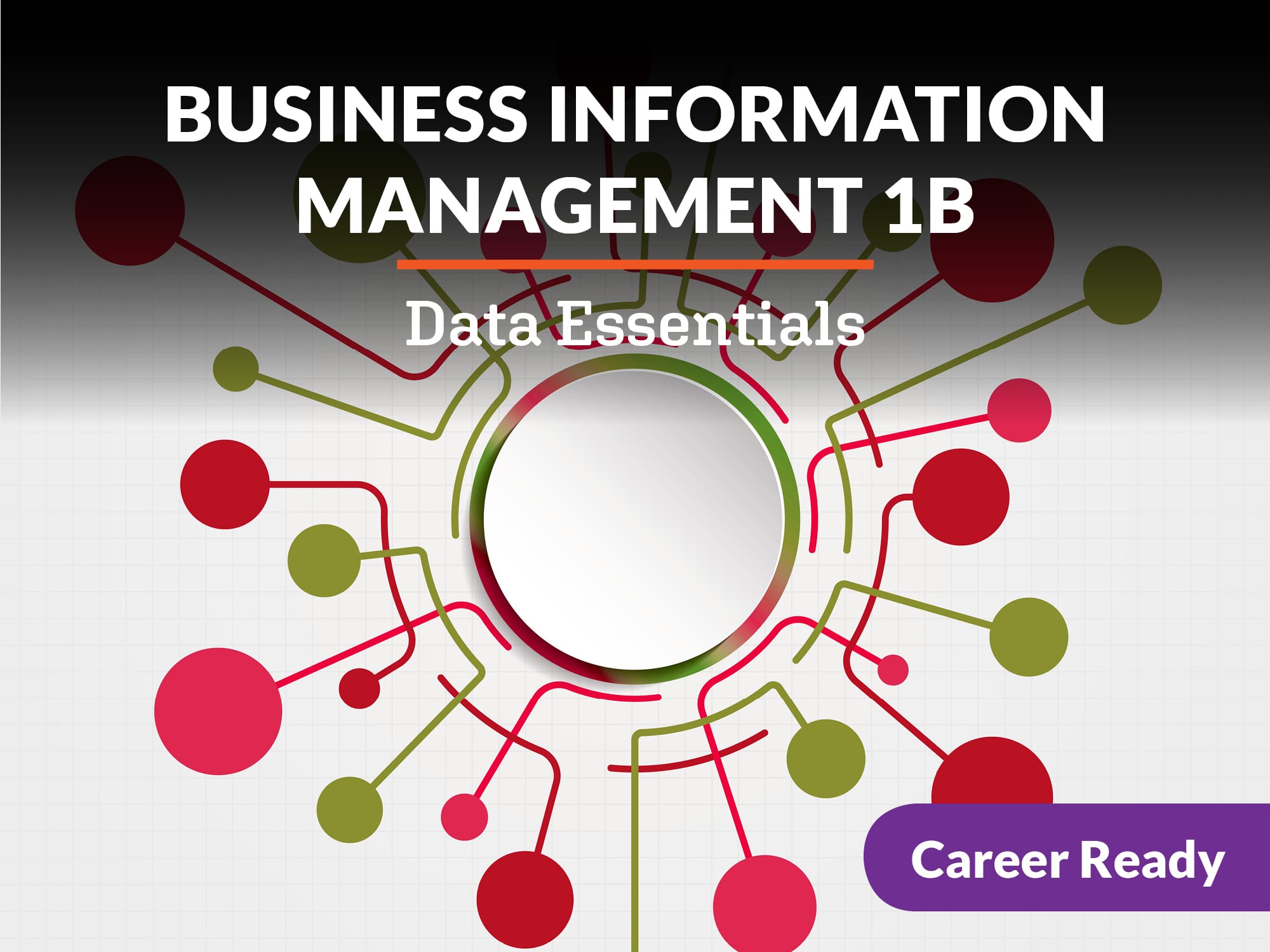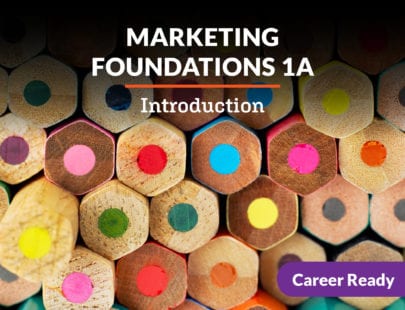
Business Information Management 1b: Data Essentials
Now that you have the basics of business down from the previous course, it’s time to become better acquainted with the application of information management in business. Learn about professional conduct, teamwork, and managerial skills, while also examining careers in business technology. The basics of word processing, spreadsheets, databases, and presentation software are also explored so that you become better prepared for jobs in this field.
Units at a Glance
Unit 1: Workplace Communication and Business
Communicating with others is a cornerstone of life. Be it chatting to friends, arguing with parents, or even listening to music, it’s all communication, but there’s more to communication than words. Being conscious of what and how you communicate with others is never more important than it is in the workplace, and this includes how you speak, how you behave, and more.
What will you learn in this unit?
- Distinguish verbal from non-verbal communication, as well as the different ways each form of communication is expressed
- Explain the importance of communication in the office or workplace
- Communicate effectively in a team
- Examine the ways communication can be used to resolve conflict
- Assess the use of project tools to manage projects and facilitate communication
Unit 2: Communicating by Email
In spite of the ceaseless rise in popularity of social media networks, email remains a staple of communication. In other words, as far as business is concerned, there really is no communicating without email, and there won’t be for a long time. Because of this, it’s important to know how to “do it right.” Knowing how to write good emails is a necessity when working for a business. This means that you must be able to communicate clearly and take advantage of the tools available to optimize your use of email at work.
What will you learn in this unit?
- Write and phrase business-appropriate messages to clients and co-workers
- Work with different types of attachments and files
- Manage your incoming mail, including spam and junk
- Configure email settings to make your processing of email more secure and efficient
- Assess the use of email in conjunction with additional communication tools
Unit 3: Word Documents in Business Communication
When it comes to communication, the written word is one of the strongest assets we have. Business communication and private communication alike strongly depend on us knowing what to write and how to write it. However, nowadays that comes with a caveat. Since people tend to prefer electronic communication to hand-written letters, they require some tech skills along with an ability to write. Word processing software, cloud storage, and shared documents—it’s a package deal now.
What will you learn in this unit?
- Recognize and create a variety of important business documents
- Examine the use of different elements to create effective written documents in Word
- Assess basic design elements used to create visually-appealing documents
- Publish and share written content in a business setting
Unit 4: Communicating Using Spreadsheets
Communication comes in many different forms, and not all of them are spoken—you can even use spreadsheets to communicate. In business, exchanging files is, of course, commonplace, and spreadsheets form a big part of that exchange. They are a convenient way to collect, track, and report data, and because of this, they are used to carry out a wide variety of tasks, from creating charts to reporting budgets. Information can be shared in many different ways, and the rows and columns of spreadsheets are a popular choice.
What will you learn in this unit?
- Examine the use of spreadsheets in business
- Identify the ways to input data into a spreadsheet
- Investigate the use of basic formulas and functions to perform calculations
- Compare the use of charts, sparklines, and graphs
- Analyze, manipulate, and share data in a business context
Unit 5: Creating and Using Databases in Business
Data comes in many forms, of course, and one of the easiest ways to store data in bulk is to collect it in a database. In essence, databases are tables in which information is stored in rows and columns that group together similar or identical pieces of information or duplicates to make it easier to view. Databases are just about everywhere: they exist behind the scenes on websites, and they even form part of the software that makes your phone work!
What will you learn in this unit?
- Compare the use of database software like Excel and Access
- Create and set up simple databases
- Manipulate and understand the relationships between tables
- Explain the basics of data mining
Unit 6: Communicating Using Slide Presentations
While you could be forgiven for thinking of communication as primarily being something that occurs between two individuals, this is not always the case. It can also take place between one person and a group, which often occurs when a person delivers a presentation, or something like a talk delivered at a conference. Teachers usually teach to groups, too. Regardless of who the participants are, however, there are tools available to make this type of communication easier for everyone to follow, and that is exactly what we will cover in this unit.
What will you learn in this unit?
- Create PowerPoint presentations
- Effectively communicate with a group in a business environment
- Edit, manage, and create slides for presentations
- Efficiently utilize presentations in business situations
Unit 7: Careers, Businesses, and Organizations
Just when you think you know it all, there’s more. In addition to learning how to use business tools, there are a few more things you need to know in order to really succeed in a business environment—that is, skills that are a little harder to pick up because there isn’t exactly a tutorial for them. Sure, you know spreadsheets, but there’s a tutorial for that. You can take a course to learn about spreadsheets and databases. But what do you know about working on a team? How well do manage your time? These skills are some of the “more” you need to know about. They represent different skills than the kind we’ve discussed so far, but that doesn’t mean you can’t acquire them. We’ll teach you some of the most important ones in this unit.
What will you learn in this unit?
- Explain interpersonal skills and how to use them to your advantage
- Describe the importance of time management, dependability, and a positive attitude
- Inform others about the advantages provided by professional and student organizations
- Identify potential career plans and career options in the field of business technology
Unit 8: The Future of Business Technology
It’s pretty difficult to deny that technology is the future. New innovations and inventions hit the market nearly every day, and while a lot of them have little if any use for you, and many don’t even have a future in the marketplace, the trend to find new solutions to old problems via the use of technology is strong. Simplifying tasks, be they personal or business-related, is something that we as a species will continue to strive towards, so you as a student should do your best to keep up with the trends!
What will you learn in this unit?
- Explain the impact that technology has on business
- Assess innovative technological ideas as prospective solutions to business problems
- Compare a variety of software tools used to create efficient resolutions in business
- Practice safe, responsible, and appropriate use of social media sites
Required Materials
Technical
- Microsoft Office 2019, or an Office 365 Subscription



